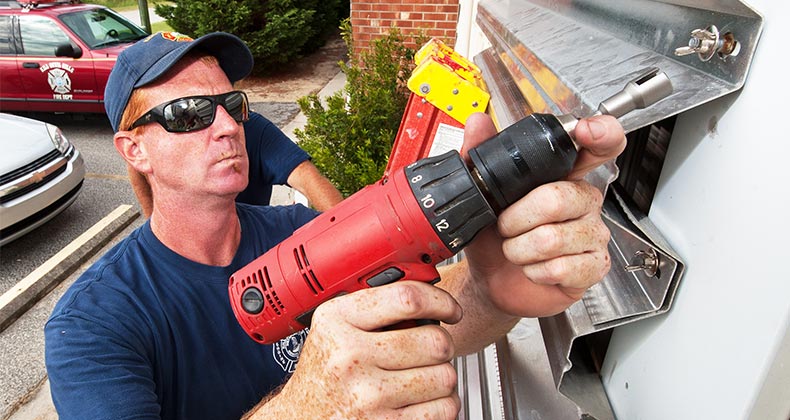How to save for a house

Buying your own house isn’t just about having a place to call your own. The equity that you build as you pay down your mortgage is an essential component of your financial security in the future.
Before you settle on a house, you’ll need to make sure you can cover the down payment, which varies depending on the property. Then, you’ll need to make sure you can meet monthly mortgage repayments. That can be a higher cost than monthly rent payments. Plus you’ll have to factor in other new homeownership costs, like property taxes and home repairs.
While 74 percent of Americans dream of owning a home one day, three out of four aspiring homeowners are held back from achieving that dream due to affordability issues, according to Bankrate’s 2023 homeownership survey. But there are some strategies that can help you save.
When you’re ready to save up for a home, here are nine steps that financial professionals recommend taking.
Key house-buying statistics
- Fifteen percent of Americans delayed buying a home due to economic concerns in 2022.
- For millennials, buying a home was the financial milestone most often delayed, with 26 percent saying they put it off due to economic reasons.
- Affordability issues hold back about three-fourths of aspiring homeowners, with the most-cited issues being lack of income (46 percent), high home prices (42 percent) and inability to pay the down payment and closing costs (40 percent).
- Bankrate’s Best Metros for First-Time Homebuyers study found that Austin-Round Rock, Texas, is the best metropolitan area for first-time homebuyers, with particular strengths in the job market and market tightness.
- In terms of affordability, Cleveland-Elyria, Ohio, and St. Louis, Missouri, scored the first and second places, respectively.
- The median monthly cost of homeownership for those with a mortgage in the U.S. was $1,697 in 2021, according to the Census Bureau’s most recent numbers. By comparison, the median monthly cost to rent was slightly cheaper at $1,163.
Sources: Bankrate, U.S. Census Bureau
1. How much house can I afford?
The value of a home is calculated by price per square foot. Generally, the bigger the house, the higher the total price will be — though the exact price per square foot is determined by lots of factors, such as location and house design. It’s important to compare the price per square foot with other homes in the area with similar features.
There’s more to think about than how many bedrooms, bathrooms and square feet you need. You’ll also want to keep on top of mortgage and refinance rates, which frequently fluctuate. You’ll also want to determine what you can really pay every month for this significant purchase.
The general rule of thumb is that your monthly mortgage payment should not exceed 25-28 percent [of] your annual income, divided by 12. So, for example, if you make $60,000, your monthly mortgage payment should not exceed $1,250.
— Jeff Rosea certified financial planner and founder of Good Financial Cents
Your monthly mortgage payment will factor into your debt-to-income ratio (DTI). The DTI is a measure of your total monthly debt payments in proportion to your monthly income. Lenders use this estimate to determine your eligibility to borrow money. Though the limit will vary by lender, it’s almost always under 50 percent (meaning less than 50 percent of your monthly income goes toward debt payments).
Make sure to calculate your DTI and consider how much of your income you can comfortably afford to subtract for debt payments.
2. House price and other budgeting expenses
Housing will likely be your largest spending category in a budget. But that doesn’t just include mortgage payments. You may also need to pay for mortgage insurance, homeowners insurance, property taxes and homeowner association fees.
Utility costs can also make up a significant portion of your monthly budget. These can include electricity, gas, water, trash pickup, cable TV and internet service. If you’re considering buying an older home, keep in mind it might not be insulated as well as newer homes, which results in higher heating and cooling bills.
Costs for renovation may also be something to factor into your budget. Consider whether any home improvements you want to make are necessary or just cosmetic — perhaps you can put them off until later, as you continue to build savings.
On average, housing costs make up 33.8 percent of consumers’ budgets, according to the Bureau of Labor Statistics. That percentage could be a good starting point for evaluating how much of your budget you should expect to go toward housing and how much more you need to save to prepare for housing costs.
3. Research what kind of housing loan makes sense for you
There are several kinds of housing loans you’ll need to research to find one that suits your credit situation and repayment preference.
Conventional mortgage loans are for homebuyers with strong credit and who can make a down payment of at least 3 percent of the price of the home. You’ll likely be required by your lender to pay private mortgage insurance (PMI) if you put down an amount less than 5 percent.
Borrowers who prefer the stability of a consistent rate may choose a fixed-rate loan, for which the monthly payment remains the same. Those who wish to have a lower payment if rates fall may choose an adjustable rate mortgage (ARM), which fluctuates along with market conditions.
Home ownership can be made affordable by loans backed by government agencies like the Federal Housing Administration (FHA) and Department of Veterans Affairs (VA). These typically require a lower down payment than a conventional loan and offer more relaxed credit requirements.
The downsides to government-backed loans can include relatively high borrowing costs and two types of required mortgage insurance. Some sellers prefer a buyer with a traditional loan since government-backed loans may require that the house meet certain criteria to pass appraisal.
4. Manage your debt
Depending on your situation, it may be more important to pay off debt than save for a down payment on a house. By eliminating some debt, you’ll have more room in your budget for monthly mortgage payments later on. Plus, paying down debts could improve your credit score and ultimately help you get a better rate on your mortgage.
Too often, not having the credit score you need to secure a low rate is one of the biggest mistakes rookie homebuyers make, financial planner Rose says.
The better your credit score, the better the terms you’ll be offered on a mortgage. The better the terms, the less you’ll pay in interest over the life of the loan. This can mean a difference of tens of thousands of dollars.
— Jeff Rosea certified financial planner and founder of Good Financial Cents
The credit score you need to qualify for a mortgage will vary depending on the type of loan. For a conventional loan, the typical minimum score needed is 620.
Improving your score may take patience, but it’s worth pursuing.
“Bringing up a poor credit score takes time, but financially, most people will come out ahead by renting for a while longer before buying,” Rose says.
5. Find ways to save
It’s time to consider cutting expenses if you find it’s a struggle to save for a down payment on a house or to meet that future mortgage payment every month.
Ahmed Ali, an outreach consultant at the home management technology company Centriq, suggests reducing expenses by 10 percent to start, if possible.
“This simply means that if your grocery budget comes to $500 a month, try to reduce it by $50,” Ali says. “It is not a huge difference to begin with, but little drops of water make the mighty ocean.”
Some other ways you can save on your monthly expenses include:
- Find a roommate and split housing costs.
- Try shopping around for cheaper insurance.
- Make small adjustments to reduce utility costs, such as switching to energy-efficient lightbulbs and unplugging appliances when they’re not in use.
- Cook more meals at home rather than ordering in/dining out.
- Consolidate debt that might have higher interest rates.
6. Look for ways to earn more money
If you’ve lowered your debts and cut spending, but you’re still falling short of your goal, it may be time to think about earning extra money
Denise Supplee, a co-founder of SparkRental.com, says that she took to renting out some of her space to help contribute to her income.
“When I was a young single mom, I rented a room out,” Supplee says. “I even got child care in the deal. I was able to save on the rent and the utilities each month. Make sure, however, if you go this route, that it is permitted by the owners of the home.”
You could also look into side hustles as a form of supplemental income. Some ideas include freelancing, dog-walking or selling stuff on an online marketplace. If you’re having trouble finding side work, there are a number of apps that can connect you to gigs.
7. Make saving a habit
Pay yourself first each check by setting aside money toward your down payment goal by setting up automatic transfers from your checking to your savings account every payday. This strategy helps ensure you won’t make impulse purchases you’d regret in the long run.
Some banks or mobile banking apps allow you to round up debit card purchases to the nearest dollar, and the difference is transferred automatically to your savings account. These round-up programs can be another convenient way to watch your savings account grow.
At a more fundamental level, it’s important to find a savings account that makes it easy for you to save. The right account will come with easily avoidable monthly fees (or none at all), a competitive APY and features that are practical for you. Compare some of the best savings accounts to find a good place to build your home fund.
8. Continue to save after the down payment
Continue to funnel money to savings even after you’ve saved enough for a down payment on a home. Don’t forget also to set aside funds for expenses like closing costs, a moving truck and furnishings.
Continuing to put money in savings will also help ensure you have the funds to cover the ongoing costs of home ownership, such as maintenance and repairs.
Frequently asked questions
-
There are three costs to consider when calculating how much you need to save for a house: down payment, closing costs and monthly mortgage. The down payment is the first amount you put down — this is a certain percentage of the total value of the home. Closing costs involve a number of fees that go toward finalizing the sale and add up to a small percentage of the home’s value. Finally, monthly mortgage payments are the ongoing cost of paying the mortgage you took out to buy the house.
-
There’s no single way to save money for a house, but a good place to start is by establishing a designated house-savings fund in an account that earns a high APY. That could be a savings account or a CD expected to mature when you want to make a down payment.
-
Finding a city that fits your needs will depend on what qualities you value most, be it affordability, job market, diversity, etc. But you can start your search for a city to move to with Bankrate’s study of the top metro areas across the country, which aggregated data for five main factors people look for in a city.
— Bankrate’s René Bennett contributed to an update of this story.
You may also like

5 key tips for buying a fixer-upper

How to prepare your home for a natural disaster




